Lesson 5
Using Equations to Solve for Unknown Angles
Let’s figure out missing angles using equations.
5.1: Is This Enough?
Tyler thinks that this figure has enough information to figure out the values of \(a\) and \(b\).
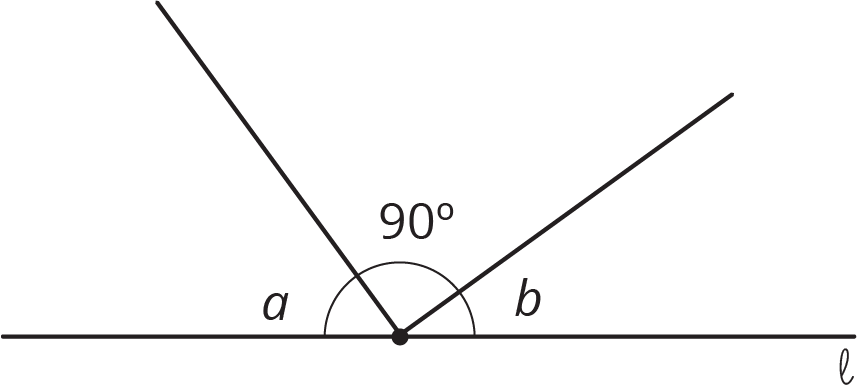
Do you agree? Explain your reasoning.
5.2: What Does It Look Like?
Elena and Diego each wrote equations to represent these diagrams. For each diagram, decide which equation you agree with, and solve it. You can assume that angles that look like right angles are indeed right angles.
-
Elena: \(x = 35\)
Diego: \(x+35=180\)

-
Elena: \(35+w+41=180\)
Diego: \(w+35=180\)
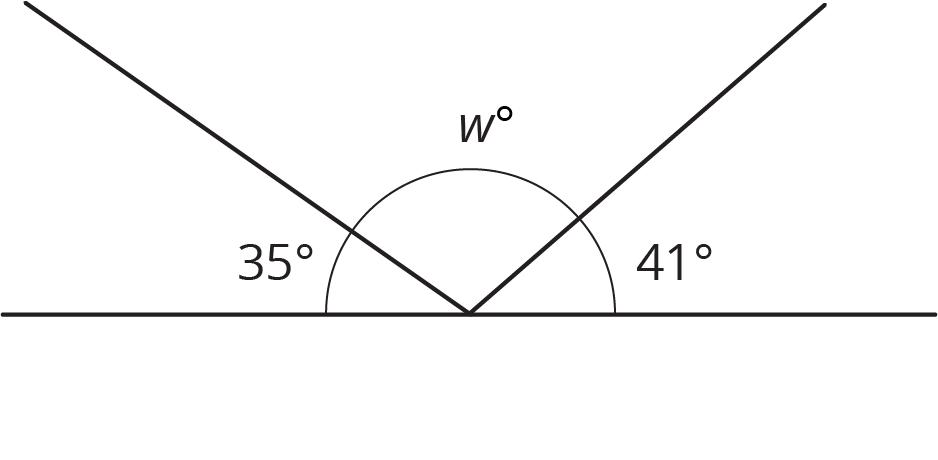
-
Elena: \(w + 35 = 90\)
Diego: \(2w+35=90\)
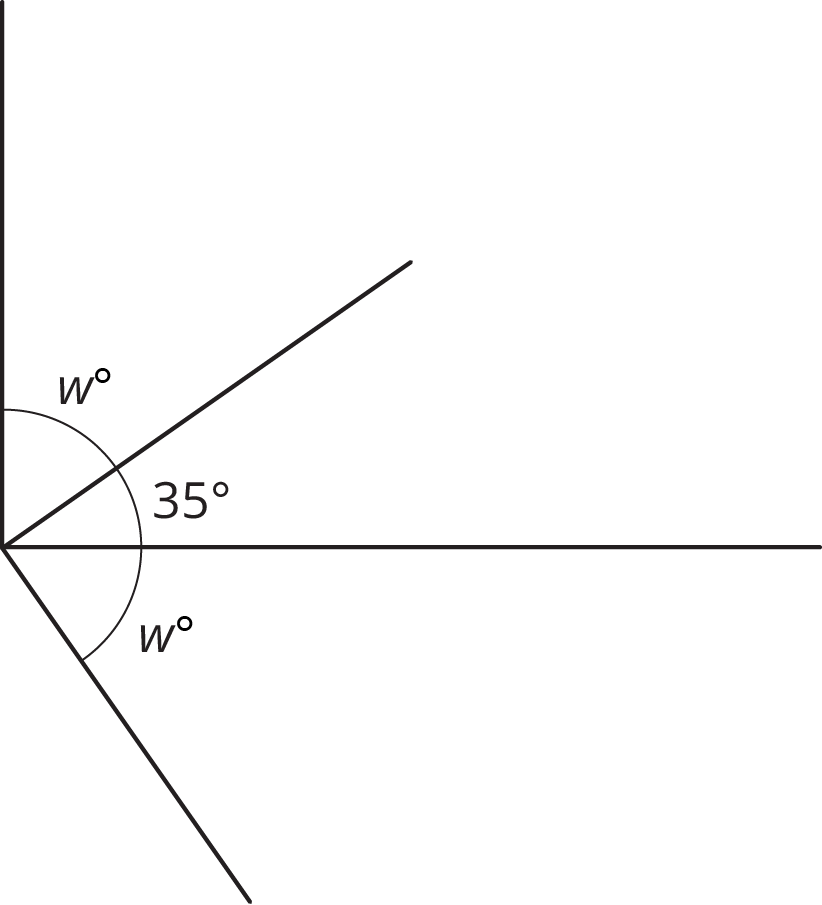
-
Elena: \(2w + 35 = 90\)
Diego: \(w+35=90\)
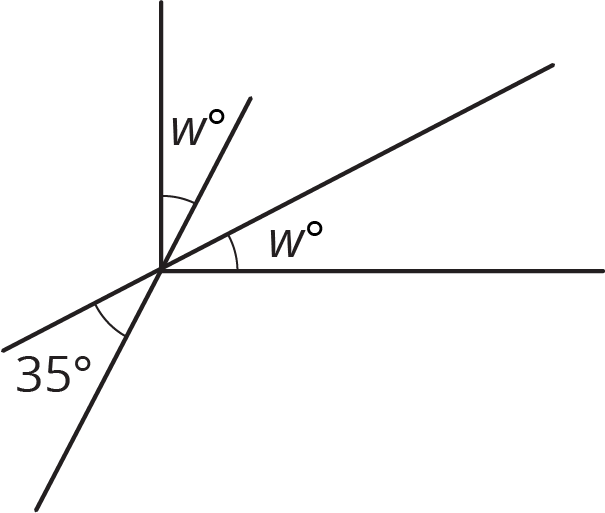
-
Elena: \(w + 148 = 180\)
Diego: \(x+90=148\)
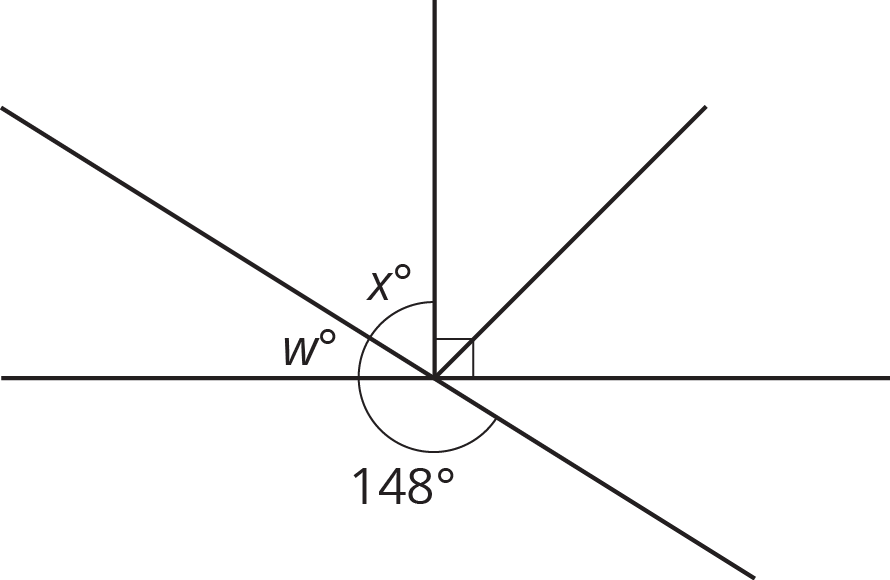
5.3: Calculate the Measure
Find the unknown angle measures. Show your thinking. Organize it so it can be followed by others.
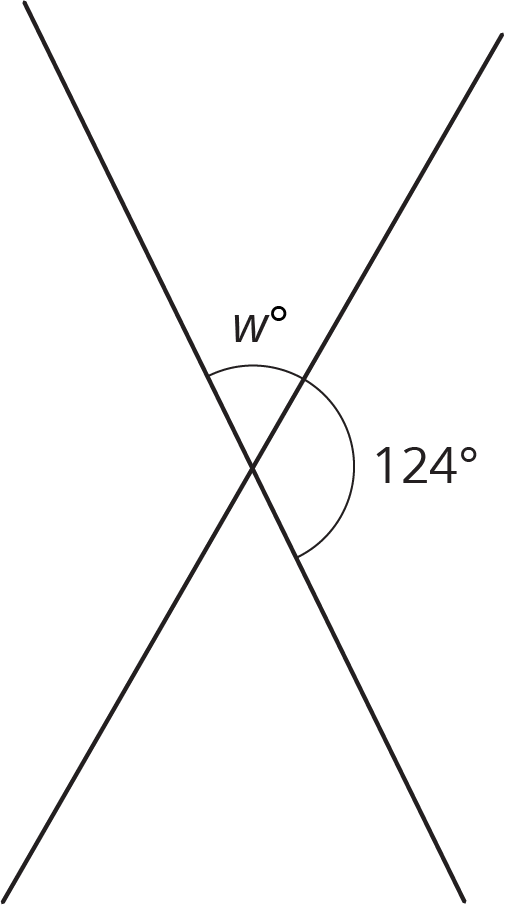

Lines \(\ell\) and \(m\) are perpendicular.
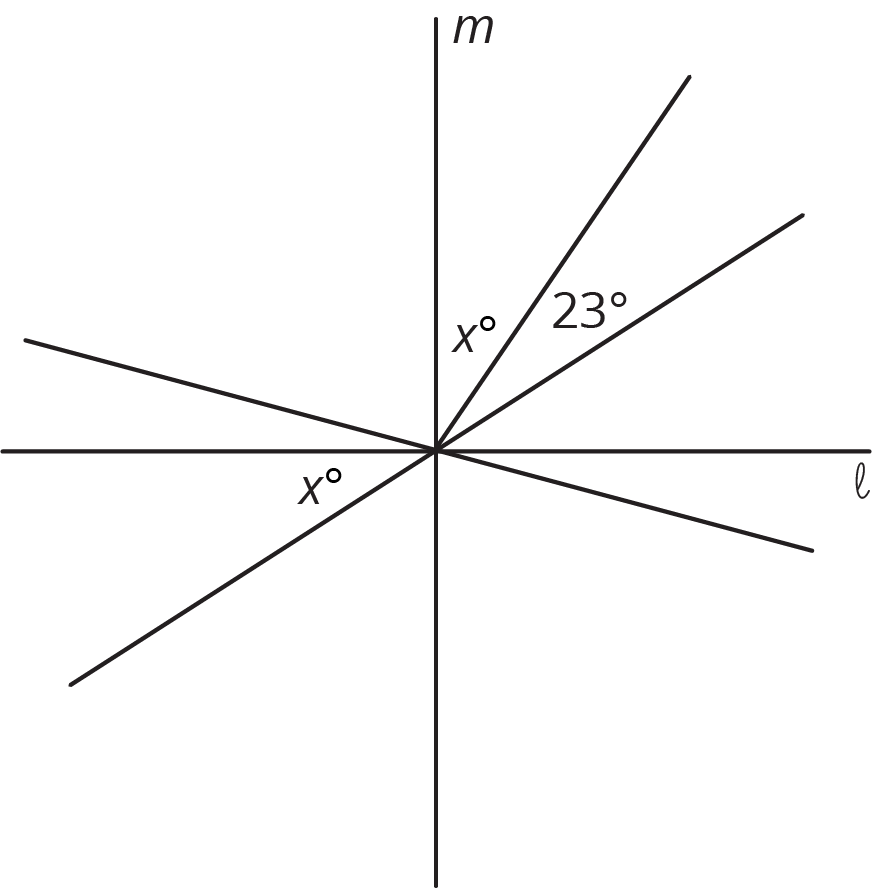
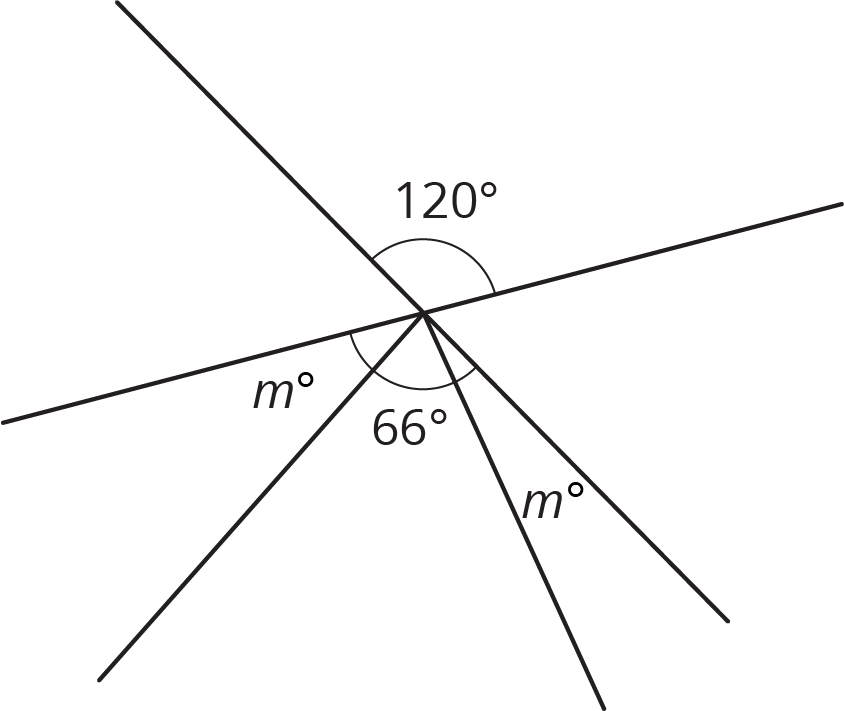
The diagram contains three squares. Three additional segments have been drawn that connect corners of the squares. We want to find the exact value of \(a+b+c\).

- Use a protractor to measure the three angles. Use your measurements to conjecture about the value of \(a+b+c\).
- Find the exact value of \(a+b+c\) by reasoning about the diagram.
Summary
To find an unknown angle measure, sometimes it is helpful to write and solve an equation that represents the situation. For example, suppose we want to know the value of \(x\) in this diagram.

Using what we know about vertical angles, we can write the equation \(3x + 90 = 144\) to represent this situation. Then we can solve the equation.
\(\begin{align} 3x + 90 &= 144 \\ 3x + 90 - 90 &= 144 - 90 \\ 3x &= 54 \\ 3x \boldcdot \frac13 &= 54 \boldcdot \frac13 \\ x &= 18 \end{align}\)
Video Summary
Glossary Entries
- adjacent angles
Adjacent angles share a side and a vertex.
In this diagram, angle \(ABC\) is adjacent to angle \(DBC\).
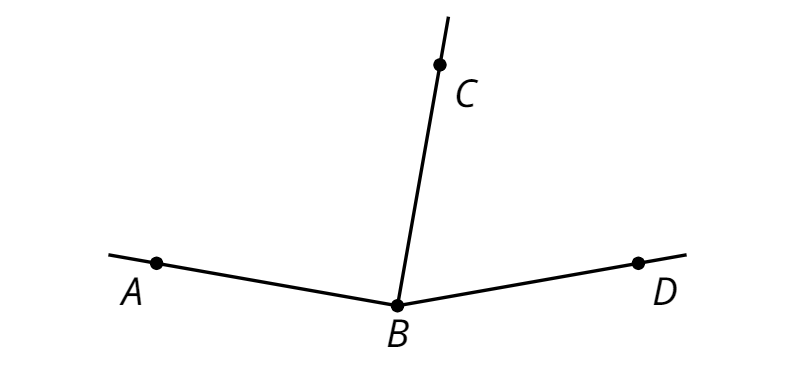
- complementary
Complementary angles have measures that add up to 90 degrees.
For example, a \(15^\circ\) angle and a \(75^\circ\) angle are complementary.
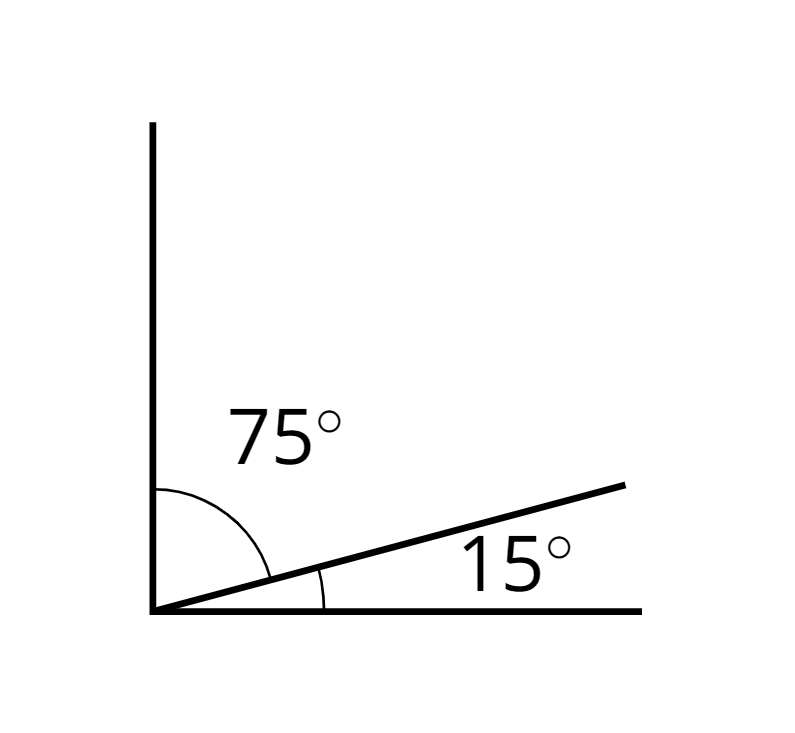
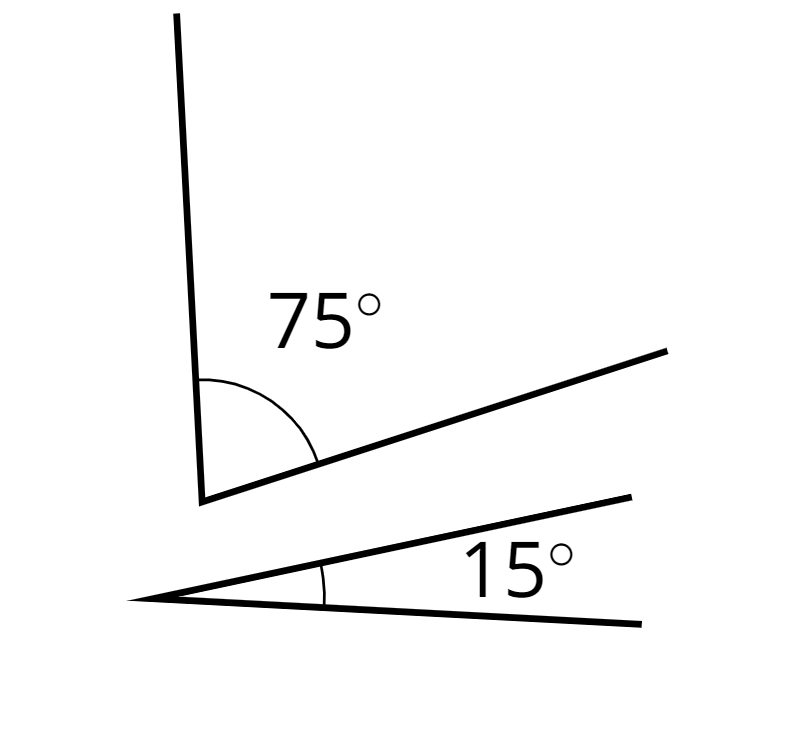
- right angle
A right angle is half of a straight angle. It measures 90 degrees.
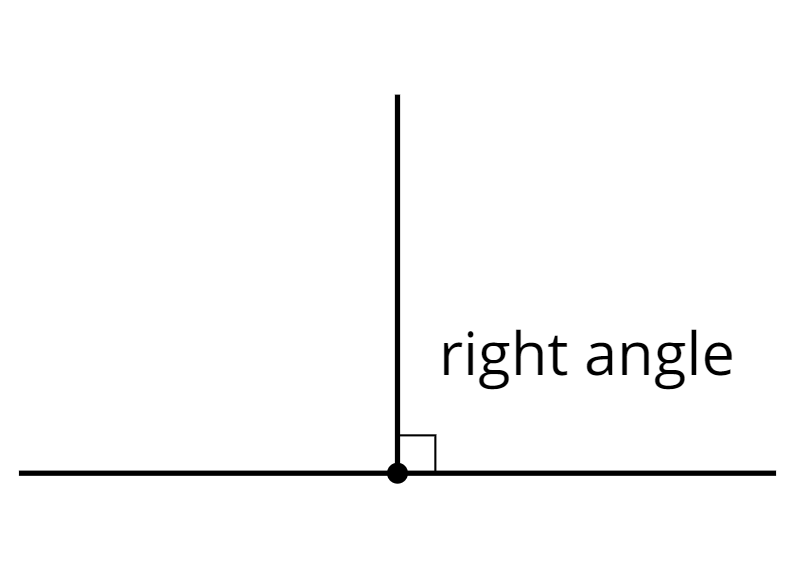
- straight angle
A straight angle is an angle that forms a straight line. It measures 180 degrees.
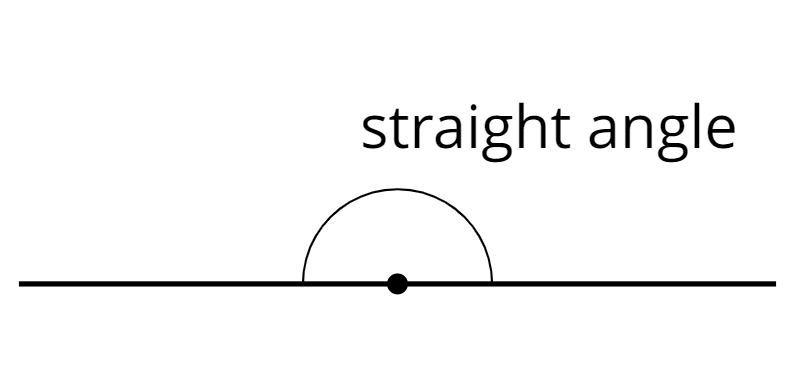
- supplementary
Supplementary angles have measures that add up to 180 degrees.
For example, a \(15^\circ\) angle and a \(165^\circ\) angle are supplementary.
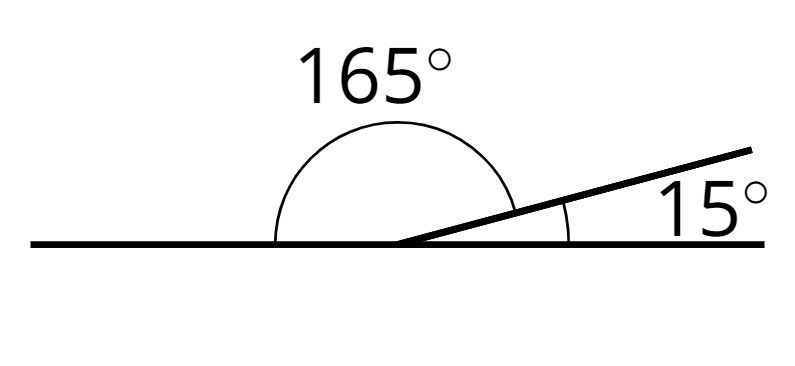
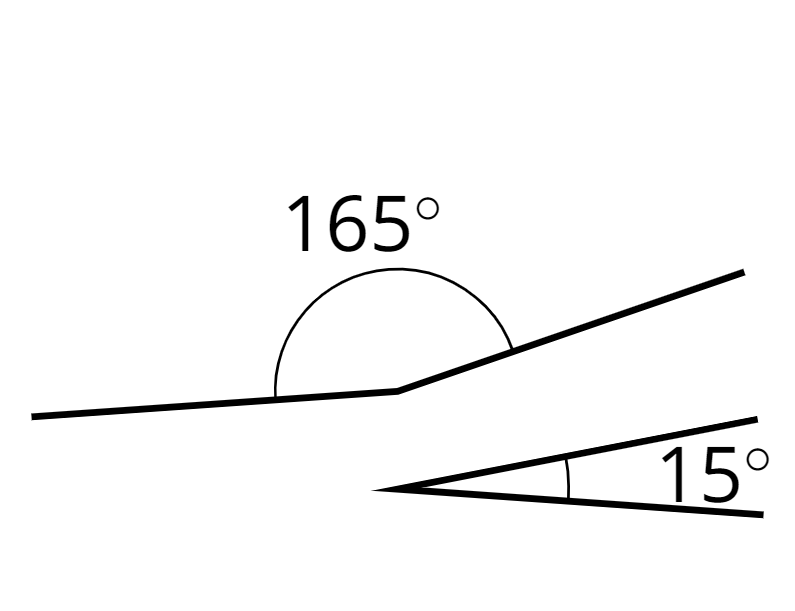
- vertical angles
Vertical angles are opposite angles that share the same vertex. They are formed by a pair of intersecting lines. Their angle measures are equal.
For example, angles \(AEC\) and \(DEB\) are vertical angles. If angle \(AEC\) measures \(120^\circ\), then angle \(DEB\) must also measure \(120^\circ\).
Angles \(AED\) and \(BEC\) are another pair of vertical angles.
